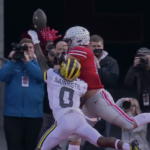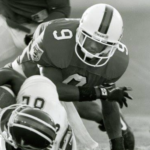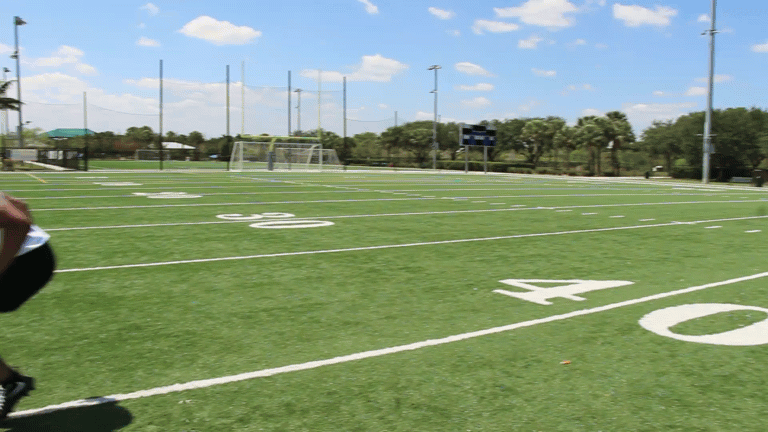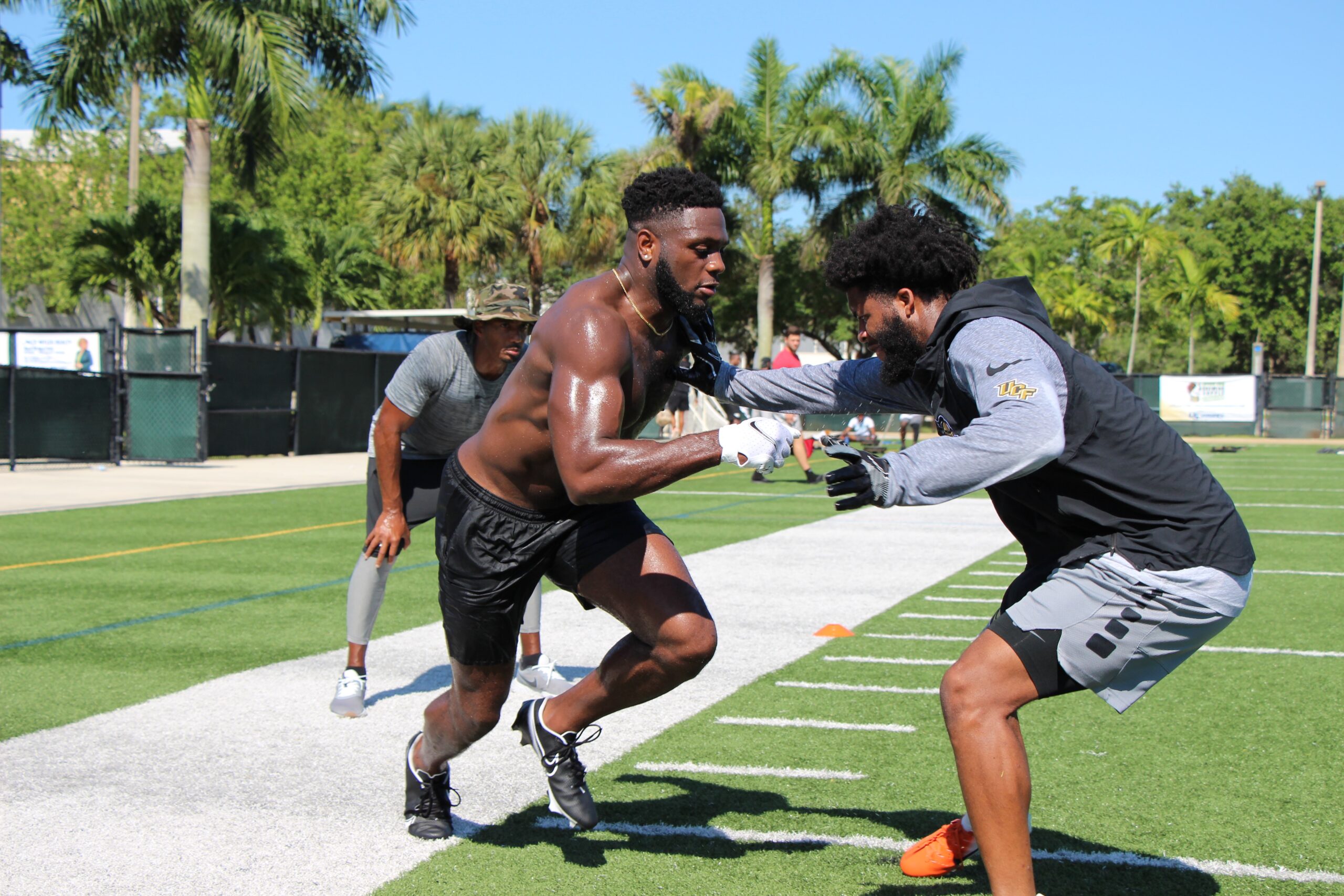
Chad Wilson
September 30, 2025
Offenses lean on condensed splits—receivers aligned tight to the formation—because they quietly unlock the whole field. From a narrow alignment, a wideout can threaten two-way releases, gain more horizontal room for crossers and deep outs, and manufacture “legal traffic” that turns into natural rubs. If your secondary doesn’t arrive with a plan, condensed quickly becomes easy yards: crossers that run away from leverage, wheels that pop unguarded, and back-shoulders that bait flags.
This piece gives you a simple, portable approach: how to align, what to say, and how to survive the classic route families you’ll see from condensed sets.
What Condensed Does—and What You Must Do
Think about the offense’s leverage math. By tightening the split, the receiver creates more grass to the outside and across the field. Now the QB can hit sail (corner/7), speed outs, overs, and wheels without telegraphing the intent. The tight alignment also shortens the distance for crack blocks and makes short motion more dangerous, turning regular sets into “not-quite-bunch” with the same pick potential.
Your answer starts before the snap. Corners should back off to five or six yards against condensed, not to be passive, but to keep vision and protect against crack-and-wheel trickery. As a default, play outside-in leverage—most teams want the crosser, so don’t gift the inside. Declare your help, align to it, and make the throw live where your overlap players can help.
It helps to talk in divider language. Draw an imaginary line from the receiver to the bottom of the numbers. Your goal is to keep the receiver on or outside that divider by the third step. If he wins across it, alarm bells should ring: you’re getting crosser/sail, so you widen with depth and invite your help to the party rather than chasing blindly across the field.
Your apex/Nickel should mirror that discipline. Align at five to six yards between #2 and the tackle with inside leverage so you’re the first solver on fast 7s and any arc/crack that tries to pull you out of your fit.
The Calls That Travel: Lock, Banjo, and Box
Condensed doesn’t always look like bunch, but it behaves like it. That’s why your communication has to be automatic.
-
Lock (MEG)—“mine everywhere he goes”—is your answer when the split is tight but the route is isolated. Be ready for the back-shoulder if you’re sticky.
-
Banjo (In–Out) lets two defenders trade responsibilities based on release. It’s the antidote to stacks and short motion that manufacture rubs; inside defender owns in-breakers, outside owns out-breakers.
-
Box/Cone (3-over-2 or 4-over-3) brackets the point when it morphs into near-bunch. Assign who is on top/down and in/out before the ball is snapped, so you’re reacting with rules, not guesses.
Motion is where busts are born. Have Push/Slide rules ready so when #2 flies across, everyone instantly knows who is the new “in” and “out” player. Reset the point and keep the language short enough to echo across the secondary.
Beating the Route Families from Condensed
Crossers and Deep Overs. Outside-in leverage at the corner spot forces the route back toward your traffic. If the receiver crosses your divider, don’t panic and chase; gain depth, pass with vision, and let the safety/nickel overlap top-down to the upfield shoulder. The completion you can live with is a contested throw arriving into layered help, not a free runner.
Sail (7) and Speed Outs. The nickel’s job is to collision through 10–12 and stay disciplined so you don’t overrun the break. Corners should “midpoint” the vertical and the 7, playing top-down overlap so you don’t donate a layup to the sideline.
Crack–Wheel. This is the condensed classic. Eyes and leverage save you. If the force player gets cracked, the corner must squeeze and take the wheel; expect the underthrow and play through it. Safeties stay high and late—don’t get suckered down by the crack and vacate the vertical.
Back-Shoulder Fade. Expect it when you’re in phase. Lean to the top shoulder, locate late, and play late hands without wrapping. If you’re trailing, don’t look back—attack the hands through the pocket.
Switches and Double Moves. Condensed plus switch is DPI bait. Use Banjo, play through the near hip, and keep hands last. Your feet win the rep; your hands finish it.
Technique That Survives Condensed
Everything you teach still reduces to the DB order of operations: eyes → feet → hands. Mirror the stem first, then win leverage, then finish. In phase (hip-to-hip), lean the top shoulder and locate late; out of phase (trailing), keep eyes on the hip and play the hands at the pocket. And remember the penalty reality: after five yards, ride with your feet, not your hands. Officials are hunting for illegal contact on condensed routes that cross and collide.
Install It This Week
You don’t need an overhaul—just purposeful reps.
Start practice with five minutes of Banjo vs. stack/short motion. Script in/out, speed-out/over, and quick switches; make the defense call Banjo before the snap and echo it again on motion. Follow with four minutes of crack–wheel exchange so the corner and safety rehearse the handoff under pressure. Close with three minutes of back-shoulder and sail from reduced splits: corners lean/locate late on the go and midpoint the 7; nickels collide then overlap, never undercutting too early.
On film, grade your unit on six things: did we identify condensed and make a Lock/Banjo/Box call; did the corner start outside-in at five to six yards; did we hold the divider by step three; did we Push/Slide correctly on motion; did we finish with the right phase rule (lean-and-locate vs. punch the pocket); and did we avoid illegal contact beyond five yards. Those answers tell you what to fix before the next Friday.
The Bottom Line
Condensed splits are an offense’s shortcut to space. When you counter with clear leverage rules, concise calls, and practiced exchanges, you steal that space back. The rubs stop working, the wheels stop popping, and the back-shoulders turn into PBUs instead of flags. If you want printable call sheets and drill progressions to drop straight into practice, you’ll find deeper installs in 101 DB Tips and inside the All Eyes DB Camp Members Area.
Chad Wilson is the owner of All Eyes DB Camp and author of "101 DB Tips". He played college football at the University of Miami and briefly in the NFL for the Seattle Seahawks. Over his 15 year high school football coaching career, he tutored over a dozen Division I defensive backs and as a trainer has worked with NFL All Pros, first round draft picks, college football All Americans and Top 10 ranked high school football prospects.










